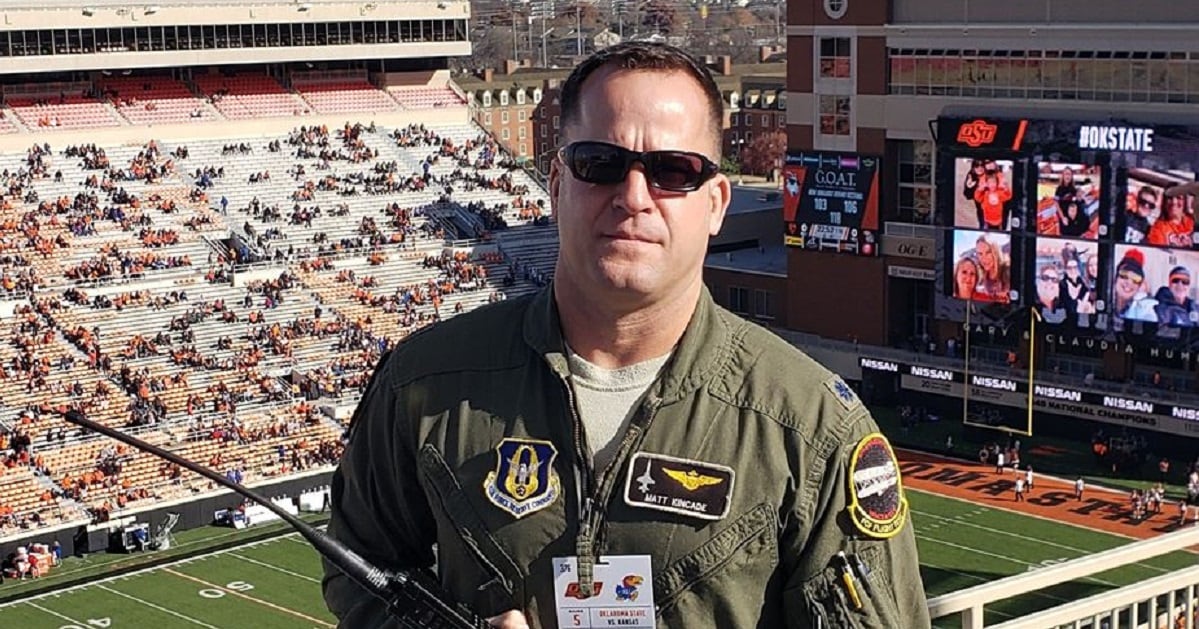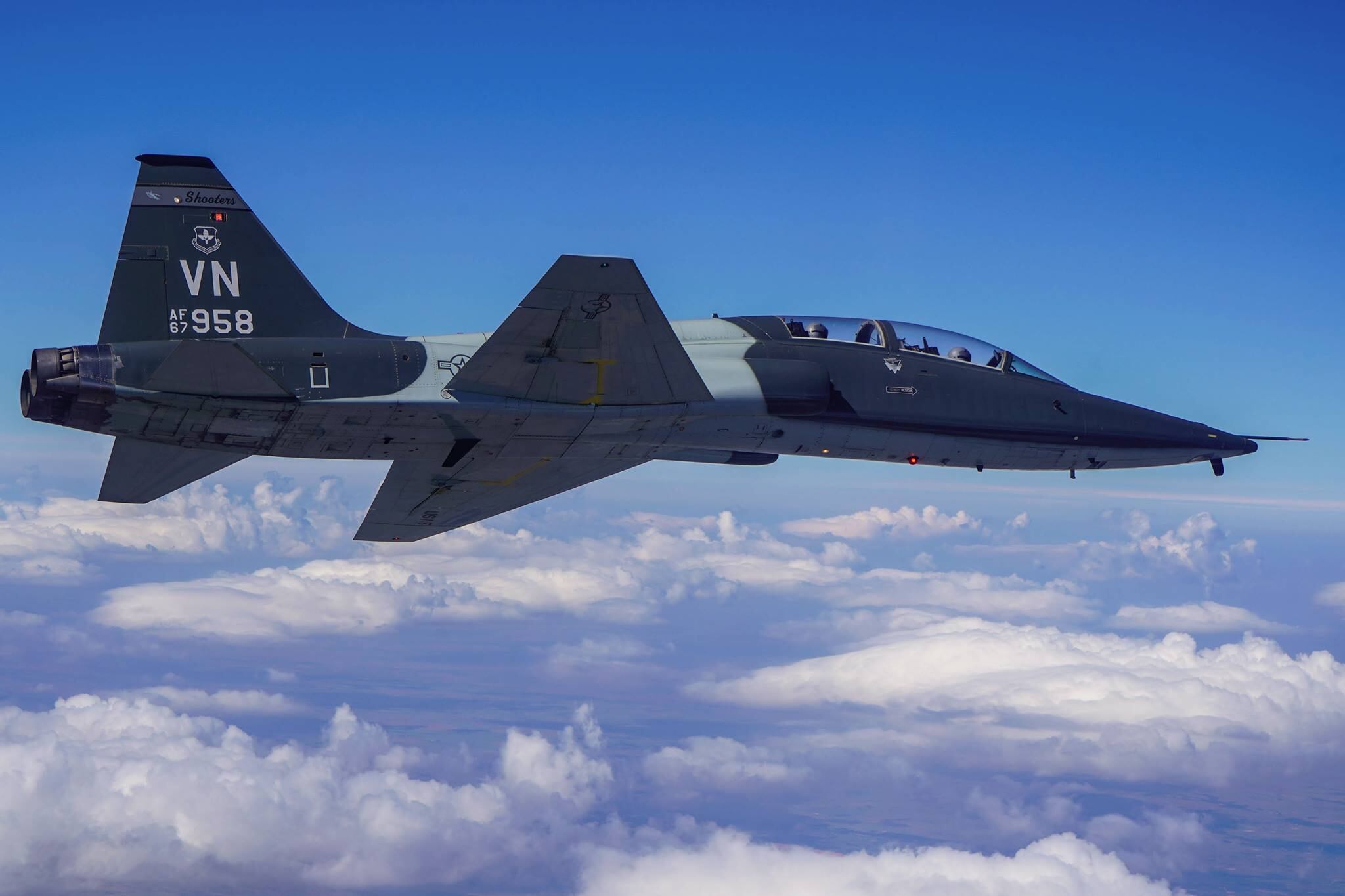An Air Force investigation into the fatal crash of a T-38C Talon training aircraft last November faulted its instructor pilot for failing to take control of the plane as a dangerous situation unfolded, according to a report released Friday.
The report into the crash, which killed both instructor pilot Lt. Col. John “Matt” Kincade, 47, and student pilot 2nd Lt. Travis Wilkie, 23, said missteps taken by the student pilot also contributed to the crash.
But in a statement also released Friday, Wilkie’s parents blasted the report as “grossly and unjustly incomplete." The Wilkie family said the report should have included the fact that he was attempting to land simultaneously alongside another T-38 — with which his plane collided during the doomed landing — as an “obvious contributing cause” to the crash.
Wilkie’s parents, Carlene and Don Wilkie, also said such side-by-side formation landings are a “dangerous and wholly unnecessary maneuver," that provides no practical benefit, and are not practiced any more by front-line combat aircraft. They called on the Air Force to stop practicing them.
“We will be forever proud of Travis and what he accomplished, yet anguished all was lost to a preventable accident,” his parents said.
Kincade was assigned to the 5th Flying Training Squadron, and is survived by his wife and two sons. Wilkie, who graduated from the Air Force Academy in 2018, left behind his wife, parents and sister, and was assigned to Vance’s 71st Student Squadron.
Wilkie and Kincade were killed shortly after 9 a.m. Nov. 21, while attempting to land at the end of a standard training flight, alongside a second T-38.
As they approached the runway, both aircraft were in a stable formation, although Wilkie was flying about 10 feet further left than was preferred, the report said. Wilkie raised his aircraft’s nose to match the second T-38, which blocked Kincade’s view of the runway, while continuing to drift further left.

Wilkie touched down with his left landing gear about 15 feet from the runway’s edge, the report said, and was still headed about 1 to 2 degrees left. The head of the accident investigation board, Brig. Gen. Evan Pettus, said it remains unknown whether Kincade noticed the drift. But Pettus wrote he believes Kincade most likely was aware of the plane’s position, and chose not to correct Wilkie because he still had enough room to safely land.
Immediately after touching down, Wilkie prematurely started an aerobrake, or aerodynamic braking maneuver, to try to fall behind the second T-38. This caused the plane to lift off slightly from the runway. Less than a second later, he turned the rudder to the right in an attempt to steer the plane away from the runway’s left edge. This was an uncommon mistake for a student pilot with Wilkie’s experience — this was his 56th T-38 sortie — to make, the report said.
The manuever caused Wilkie’s T-38 to roll and yaw to the right, landing back on the runway, and entering a skid on a collision course with the second aircraft, the report said.
RELATED

Pettus believes Kincade took control around that point, leveled the wings, stopped the skid and pulled back hard on the stick to try to fly over the second T-38, but didn’t have enough airspeed to make it. Their plane’s right landing gear door contacted the second plane’s left wingtip, trapping the wing between their right main landing gear tier and the landing gear door.
This caused the doomed T-38 to roll rapidly to the right, strike the second plane with its wing, and continue rolling over the second plane until it hit the ground, killing both pilots on impact.
It’s unknown whether they considered ejecting, the report said, but their decision to keep fighting in an attempt to avoid colliding with the other aircraft likely saved the lives of the other two pilots.

The report said Kincade’s fellow instructors consistently said he was “one of the most capable and dedicated T-38C instructor pilots at Vance." And some said that because he was very confident in his abilities, he was comfortable allowing student errors to progress further than other instructors would have, so students would better learn from their mistakes. But the investigator said there was no evidence Kincade ever disregarded safety measures when flying.
However, the investigator concluded that Kincade did not accurately gauge the risk of what was going on during the landing, and as a result failed to take control of the plane earlier, as the danger grew. The investigator believes Kincade wasn’t aware Wilkie had turned the rudder to the right until after the rapid roll had begun, at which point a collision was unavoidable, the report said.
‘Tired old plane’
But Wilkie’s parents said it should never have been Kincade’s responsibility to save both their lives while conducting “an exceedingly unsafe maneuver in an exceedingly tired old plane,” where small, split-second student mistakes could prove fatal before instructors have a chance to respond.
“We don’t think the Air Force is doing right by our airmen and airwomen by mandating student pilots land in formation in a plane so old that it doesn’t perform as responsively as needed to prevent loss of life,” Wilkie’s parents said. The Air Force started flying the T-38 in 1961.
They also said the report overlooks the T-38′s dangerous tendency to flip while landing at low speeds.
Wilkie’s parents also called on the Air Force to speed up the process for replacing the T-38 — which the Air Force began using for training in 1961 — with the T-7A Red Hawk.
Stephen Losey is the air warfare reporter for Defense News. He previously covered leadership and personnel issues at Air Force Times, and the Pentagon, special operations and air warfare at Military.com. He has traveled to the Middle East to cover U.S. Air Force operations.




